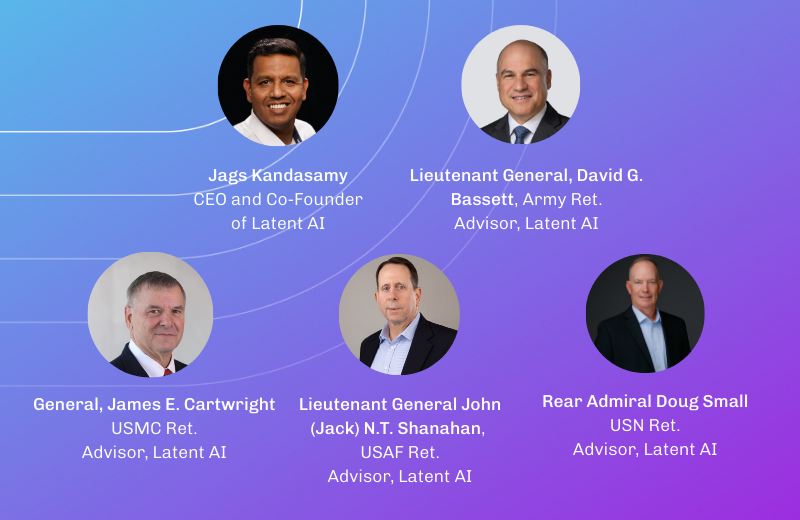AI model compilation for high-performance models at the edge

Let’s say your highly successful cupcake business is opening a second location. Before your grand opening, you want to compare drive-by traffic with your original location so you can accurately forecast cupcake production. To do so, you design and train a machine learning (ML) model to count cars driving by the new retail location. The model works well in your development environment, but now you need to deploy it to a locally installed edge device, where it will run continuously, in near real time, with minimal energy consumption. The challenge you face is that while the model is accurate in the lab, it needs to be optimized for the constraints and capabilities of your target device.
You can optimize your ML model using a variety of tools. One tool at your disposal is compilation, which allows you to tailor your model for your edge device’s hardware, whether it’s a lightweight single-board computer like the Raspberry Pi or a high-performance AI platform like the NVIDIA Jetson AGX Orin. Let’s learn how compilation helps you move from powerful cloud-based models and resource-constrained edge devices, ensuring your application runs smoothly and efficiently in the real world.
Considerations for working at the Edge
The edge represents the space where a digital system interacts with the outside world, where data is collected and processed closer to its source instead of being sent to a central server.
Edge devices share several important characteristics that differentiate them from cloud and network systems. First, they are resource-constrained, with limited computing power and energy sources. Next, edge devices are designed to perform real-time and time-sensitive tasks.
In order for edge applications to perform time-sensitive tasks with limited resources, ML models designed for the edge should be lean and fast. Designing for the edge involves optimizing execution flow for specific hardware targets and translating source code into compiled machine code. Compiling all the way to machine code makes models execute faster, use fewer resources, and run more securely. Each of these benefits is critical to small, disconnected, resource-scarce devices running at the edge.
Can I lean on popular ML frameworks for compilation?
Most popular frameworks, such as PyTorch, ONNX, or Tensorflow, have built-in support for model optimization. However, they generally focus on cloud and developer environments and do not typically support optimization for embedded devices. When it comes to edge deployments, these frameworks have the following gaps:
- Your target hardware may not be supported by the framework.
- The framework may compile to machine code only during runtime, causing your target hardware to waste unnecessary resources.
- Your framework may not include the device-specific optimization your target hardware requires.
Moreover, you are more likely to make your edge inference faster, more secure, and less resource-hungry by using a dedicated compiler tool.
Why not any other compiler?
While you might be inclined to rely on a code compiler you are familiar with, transferring your model to an edge device requires an ML compiler. ML compilers can identify code patterns typical of ML models, such as:
- operator fusion and reordering
- model parallelization
- managing model loading to memory
- operators optimized for target hardware
- heterogeneous execution (running different parts of a model on different compute resources)
By leveraging optimizations specific to ML models, ML compilers can compile much more effectively.
Advantages of using an ML compiler
You deploy machine code
You can convert your model to machine code at runtime or beforehand (precompiled). Precompiled binaries are much more efficient to execute than a high-level model converted to machine code on the fly. A compiled binary is also target-specific, not human readable, and not designed to be modified—enhancing security and secrecy.
You optimize for specific hardware
Hardware vendors achieve ML acceleration with specialized hardware optimization libraries. These libraries, which include custom machine code formats and programming patterns tailored to the hardware, are typically designed to be used via ML compilers.
You maximize model speed, model size, and resource utilization.
If an ML model is deployed on the fly, runtime has limited time for optimization. When conversion to machine code is done at compile time, the compiler can take a holistic view and perform many more optimization passes before producing efficient machine code.
Compiling with LEIP Optimize
LEIP Optimize provides a seamless transition from model development to optimization and compilation for edge deployment, supporting models from a variety of frameworks and providing fine-grained control over optimizations through a single API for multiple hardware platforms.
You can bring your model from any popular machine-learning framework into LEIP Optimize. You can seamlessly ingest models from frameworks such as Tensorflow, PyTorch, and ONNX. LEIP Optimize even supports models with dynamic input tensors, new models such as transformers, and most computer vision models.
You can leverage the optimization options provided or design your own to optimize your model speed, size, and resource utilization. Forge, the optimization design tool within LEIP Optimize, simplifies model-hardware optimization, allowing you to conduct rapid prototyping. Our Direct Graph Manipulation Tool provides experts with explicit control to debug and modify incompatible models for specific hardware.
Finally, you can compile an accelerated deployment of your model to your chosen hardware target using TVM ML Compiler or vendor-specific optimization libraries.
Simple Compiling for a Target with Forge
Once you have loaded a model into Forge, you can compile it for your target—in this case, a Raspberry Pi—as follows:
ir.compile(target=“raspberry-pi/4b64")
You can explore model optimizations, compiler optimizations, and quantization to improve deployment even further.
Conclusion
ML compilers are powerful tools that can make edge deployment faster, more efficient, and more secure. They can ensure portability and enable optimizations that help your edge applications make efficient use of limited computing and energy resources. Although ML compilers require model and hardware expertise, LEIP Optimize provides an API that is intuitive to use and requires much less model- and device-specific knowledge.
To learn more, access our developer documentation or check out product information. If you are new to Latent AI, request a demo today.





